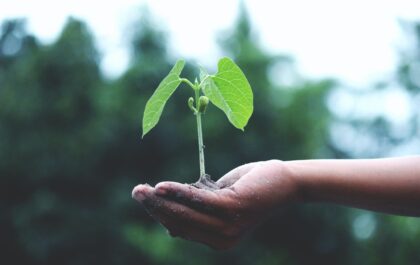The numerous uses of soybeans as a daily diet, feed for animals, and fuel source have drawn attention worldwide. Thus, farmers and other agricultural professionals are investing more in soybean cultivation.
According to the USDA, predictions farmers will produce about 392.17 million metric tons of soy in 2023 and about 40 million metric tons more than in 2022. So, if you want to jump on the bandwagon of cultivating this marvelous crop, knowing these five points can be helpful. Here is what you need to know.
- Know the Appropriate Soybean Variety
For aspiring growers, selecting the appropriate soybean variety is the most critical decision you’ll ever make. To know more about soy variety, check out the practices exercised by U.S. soybean farmers and producers. Remember, to be mindful of certain factors which will come into play when you choose the best cultivar for your existing conditions:
- Maturity Group: Soybean varieties are classified into maturity groups based on their flexibility to grow in certain conditions and times of the year. It is highly suggested that you choose a type well-suited to your region’s climatic conditions and length of day.
- Yield Potential: Look for varieties that already have a good reputation in your area. Consult an agricultural expert and review regional yield records to make concrete decisions.
- Disease and Pest Resistance: Choose a soy variety resistant to pests and diseases to reduce the chances of introducing chemical agents, ensure a healthier environment, and reduce costs.
- Seed Quality: Only buy certified and prime-quality seeds from reliable vendors with a proven track record. Good seeds produce better germination rates, uniform plant growth, and higher yields.
- Herbicide Tolerance: Whether you like it or not, herbicides are necessary. Thus, always consider herbicide-tolerant strands, allowing for efficient weed control without damaging the crop.

- Soil Preparation and Fertility Management
Soybean cultivation requires a properly-prepared soil and optimal fertility management:
- Soil Testing: First, test the soil to determine the nutrient levels and pH of the soil to decide whether it needs any lime to be more conducive to farming.
- Preparing the soil: Provide enough tillage to ensure an excellent foundation for optimal seed-to-soil interaction, great germination and root development.
- Fertilization: Use the apt amounts of nitrogen, phosphorus, potassium, and other micronutrients according to the soil test result. Only proper fertilization can provide you with a best-quality crop and lower the chance of nutrient deficits in the soil.
- Liming: If the soil pH is too low (acidic), apply lime to the soil to raise the pH to the perfect range, that is, 6.0 to 6.5. This promotes nutrient availability and enhances soybean growth.

- Seeding and Planting
For high soybean yields, proper seeding techniques are essential. Here’s how you seed and sow:
- Planting Date: The ideal soil temperature for planting soy seeds is at least 50 degrees Fahrenheit. Planting early during the seeding months will lead to larger yields, enabling the plants to benefit from the longer growing season.
- Seeding Rate: Select the appropriate seeding rate based on the selected variety, seed size, and planting apparatus. Avoid high seeding rates, as it will result in congested plants. However, a low rate can reduce the potential yield. Thus, it would be best to consult your local agricultural expert.
- Row Spacing: Opt for narrower row spacing (15 inches or less) to increase sunlight interception, reduce weed competition, and enhance yield.
- Planting Depth: Plant seeds at a depth of 2.5 to 3.8 cm or 1 to 1.5 inches. This ensures good seed-to-soil contact and proper germination. Planting too shallow or deep can lead to poor emergence and reduced yields.
- Integrated Pest Management (IPM)
Effective elimination of crop diseases, pests, and weeds is essential for a successful soybean yield. Implementing Integrated Pest Management (IPM) helps reduce crop losses and minimizes the need for chemical inputs:
- Scouting: Watch for pests, excess weed growth, and crop diseases. Remember to eliminate an infestation as early as possible, or it will harm your yield and revenue.
- Cultural Practices: Practice crop rotation, maintain optimal plant populations, and employ proper tillage practices to reduce pest and disease pressure.
- Biological Control: Infestation is bad. However, some insects are beneficial for plant life to thrive. Hence, encourage beneficial insects and natural predators to help control pests.
- Chemical Controls: Pesticides will be a necessity. However, you must use them prudently. Be selective when choosing these products and choose environmentally friendly ones. Additionally, only use them as per the manufacturer’s instructions, or else you may cause harm not only to your plants but to yourself.
- Resistance Management: Weeds and insects are living beings, so prolonged exposure to the same pesticides and herbicides will cause them to develop a certain level of immunity. Alternate between them and use different brands, however, keep up with the quality and check whether the new product will suit your yield.

- Harvesting and Post-Harvest Handling
Proper harvesting and post-harvest handling practices are vital for maintaining soybean quality and maximizing profits:
- Harvest Timing: Delays result in diminishing yields due to shattering and reduced seed quality, so only harvest when the seed’s moisture level is between 13% to 15%.
- Storage: Store the soybeans in a clean, dry, and well-ventilated environment.
- Marketing: Like any marketing strategy for other products, note market trends for soy and local pricing to make the most profits. Additionally, take into account storage and transportation costs when making marketing decisions.
Conclusion
So, by choosing the correct strand, optimizing the soil quality, and adopting efficient and contemporary farming methods, you can start generating profits in no time. Hence, please stay informed and refine your farming methods to achieve and sustain a profitable soybean production business for years.
Related posts
When was the first presidential election in the US?
The election process in the world’s most powerful nation, the US, has come a long way. Various amendments have been made to the Constitution that allowed black men, white women and other disadvantaged groups to participate in the elections. Further amendments during the 60s and…
Tips & Trick For Healthy Glowing Skin
Lorem ipsum dolor sit amet, consectetur adipiscing elit. Nam laoreet, nunc et accumsan cursus, neque eros sodales lectus, in fermentum libero dui eu lacus. Nam lobortis facilisis sapien non aliquet. Aenean ligula urna, vehicula placerat sodales vel, tempor et orci. Donec molestie metus a sagittis…
My Fight With Depression. Concussions
Lorem ipsum dolor sit amet, consectetur adipiscing elit. Nam laoreet, nunc et accumsan cursus, neque eros sodales lectus, in fermentum libero dui eu lacus. Nam lobortis facilisis sapien non aliquet. Aenean ligula urna, vehicula placerat sodales vel, tempor et orci. Donec molestie metus a sagittis…
Top 10 most visited tourist places in the world
Lorem ipsum dolor sit amet, consectetur adipiscing elit. Nam laoreet, nunc et accumsan cursus, neque eros sodales lectus, in fermentum libero dui eu lacus. Nam lobortis facilisis sapien non aliquet. Aenean ligula urna, vehicula placerat sodales vel, tempor et orci. Donec molestie metus a sagittis…
How Digital Health Technology Is Beneficial?
Digital health revolves around the usage of diverse technological platforms including mobile health, teen health, configurable remote patient monitoring, etc to improve the connection between the patients and the doctors. Across the healthcare system, the horizon and scope of digital health have helped create opportunities…
How Latest Farmtrac Tractors are Improving Farming in India?
India mostly relies on farming, and a large part of the population depends on it for their livelihoods. Recently, there’s been a big shift towards using modern farming techniques and machinery to make farming more productive and efficient. A good example of this is the…
Dispelling Myths: Demystifying Rx Waste and Expiration Dates – WasteX Pharmaceutical Waste Disposal Separates Fact from Fiction
The specter of “expired” medication looms large, conjuring images of potent chemicals wreaking havoc on water sources and ecosystems. But before you panic toss that bottle of pills, let’s delve into the truth about pharmaceutical waste and expiration dates, separating fact from fiction. At WasteX…
Sustainable Living in Memphis: Green Initiatives and Eco-Friendly Hotspots
Memphis, a city known for its rich cultural heritage and vibrant atmosphere, is increasingly becoming a hub for sustainable living. As environmental awareness continues to grow, residents and businesses in Memphis are embracing green initiatives and fostering eco-friendly practices. Let’s explore the city’s commitment to…
Today's pick
Hot topics
Stay connected
Meet the Author

Gillion is a multi-concept WordPress theme that lets you create blog, magazine, news, review websites. With clean and functional design and lots of useful features theme will deliver amazing user experience to your clients and readers.
Learn moreCategories
- Animals (7)
- Apps & Softwares (8)
- Automotive (8)
- Beauty (8)
- Business (141)
- Cars (12)
- Cartoon (3)
- Cook (4)
- Cooking (1)
- Design (8)
- Economy (6)
- EDUCATION (25)
- Entertainment (16)
- Fashion (23)
- Fitness (2)
- Food (16)
- Gaming (51)
- Guide (20)
- Health (119)
- Home (52)
- Home improvement (12)
- Interior (3)
- Law (16)
- Life (1)
- LifeStyle (99)
- Marketing (5)
- Motivation (9)
- Movie (6)
- Movies (1)
- Music (3)
- News (8)
- Painting Art (1)
- People (15)
- Photography (7)
- Review (113)
- Services (7)
- Social Media (6)
- Sport (9)
- Sports (12)
- Style (10)
- Swimming (1)
- Tech (125)
- Travel (26)
- Uncategorized (17)
- Vape (5)
- Western (3)
- World (2)










